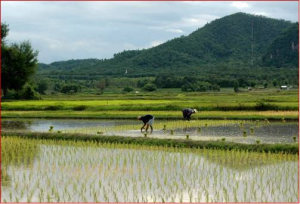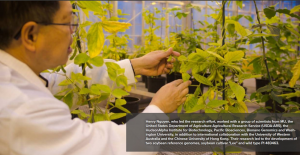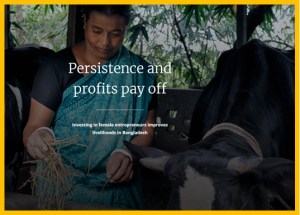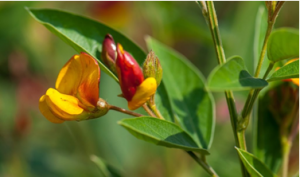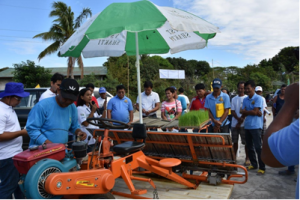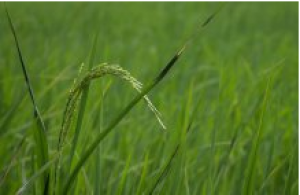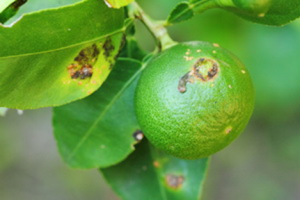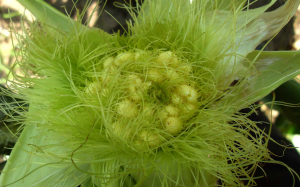Auxin is present in varying concentrations in plant cells and tissues. The speed of plant growth, especially at the top, development of lateral shoots and roots, leaves, flowers and fruits are set in motion by the hormone auxin. It's still a mystery how all these processes are made possible by this age-old molecule, and how such a complex system came about.
The CAS team collected and analyzed samples of phytoliths, a microscopic structure of silicon dioxide, from rice leaves in an archaeological profile at Hehuashan site in China. According to the researchers, a modification in the quantity and forms of the fan-shaped phytoliths recovered from the Early Neolithic site showed a change from wild rice to cultivated rice at the time of human occupation, which provides evidence of potential manipulation of wild rice during Shangshan Culture period about 10,000 years ago.
For almost a decade, only one soybean cultivar – "Williams 82" – had been sequenced. Now, scientists at the University of Missouri led by Henry Nguyen, a Curators' distinguished professor of plant sciences in the College of Agriculture, Food & Natural Resources mapped two more. Focusing on soybeans grown in southern U.S., as well as a wild ancestor, Nguyen's team mapped soybean cultivar "Lee" and wild type PI 483463.
Knocking on closed doors is something Renu Bala is very good at. First, it was the doors of her neighbours in Panjor Bhanga, her home village in northern Bangladesh. She had an idea for them: what if they formed a milk cooperative? They didn’t have much to lose. “The women of this village are very poor and raise only local Deshi cattle,” Renu explains. “I thought that if I could start a dairy business, and encourage other women to join, if I could make them aware, then we could all profit.”
The project will benefit an estimated 55,000 farmer families directly and over 200,000 families indirectly through a wider spill-over effect leading to a doubling of family incomes over the next five years. The initiative comes in the wake of a recent announcement of a roadmap by the Government of India to target doubling of farmer incomes by 2022 across the country.
Recently, scientists found that more frequent flooding caused by storm and rainfall along with erratic temperature are responsible for the resurgence of phytophthora blight, a devastating disease that weakens pigeonpea stems irrespective of soil types and cropping patterns. With climate change, new invasive pests and changes in the farming landscape, strategic pulses like pigeonpea can dramatically fail.
Sustainable water management is at the heart of producing more food with less resources in an increasingly complex environment due to climate change. The International Rice Research Institute (IRRI) and the Philippine Rice Research Institute (PhilRice) is working together in creating impacts at scale that is beneficial for the people and the planet.
An international team of experts led by the University of Exeter used chemical genetic inhibition of a protein in rice blast and successfully stopped it from spreading in a rice leaf. The results are published in Science.
Rice blast destroys up to 30 percent of the world's rice crop annually. The fungus has a powerful mechanism of infecting a rice plant.
Researchers from Boyce Thompson Institute (BTI) and the USDA Agricultural Research Service (USDA-ARS) found new clues about how the bacteria linked to citrus greening infect the only insect that carries them which could lead to finding the solution on how to block the spread of infection. The results are published in Infection and Immunity.
Plant growth and development depend on meristems, the plant reservoirs that contain stem cells. When prompted by peptide signals, stem cells in the meristem develop into any of the plant's organs. Scientists at Cold Spring Harbor Laboratory (CSHL) have identified a protein receptor on stem cells involved in plant development that can issue different instructions about how to grow depending on what peptide (protein fragment) activates it.


 Curently online :
Curently online :
 Total visitors :
Total visitors :

